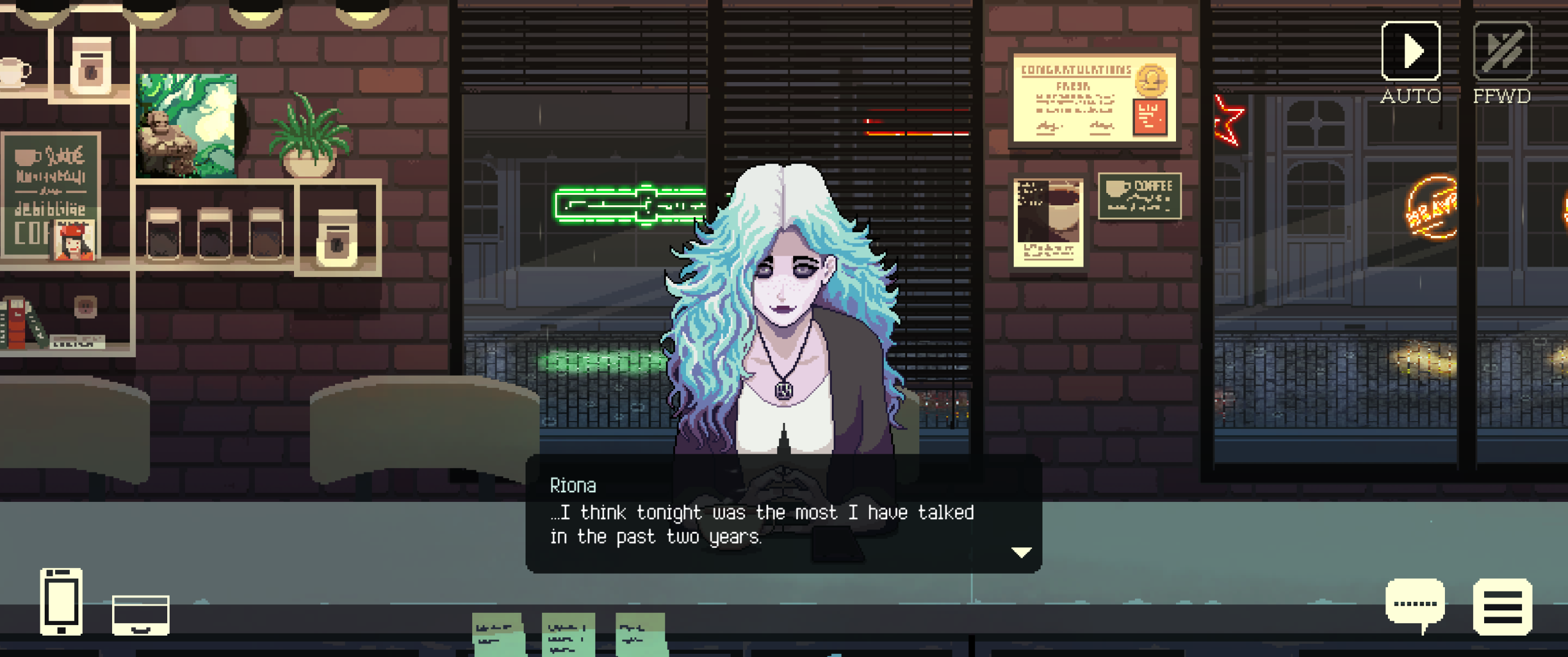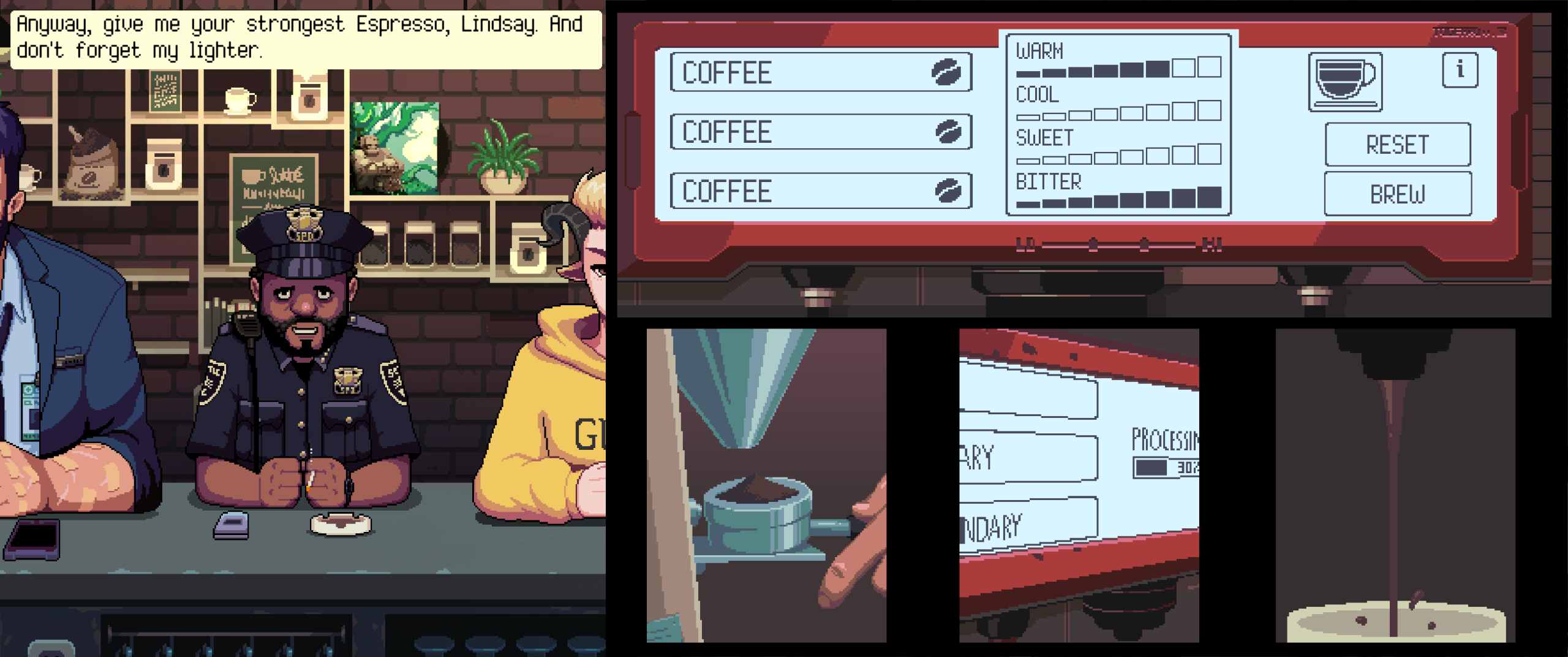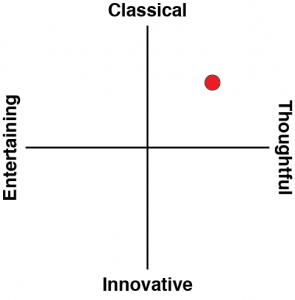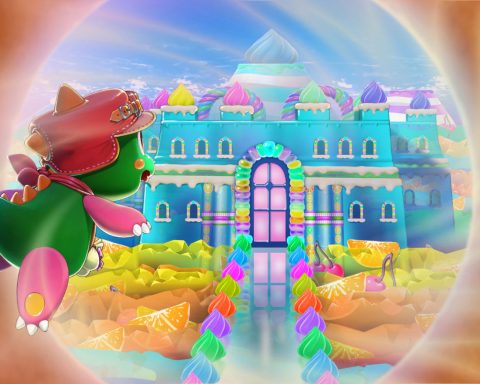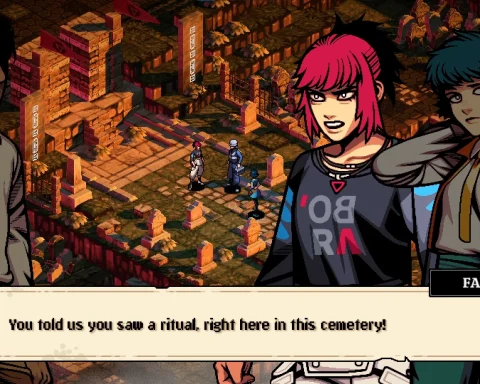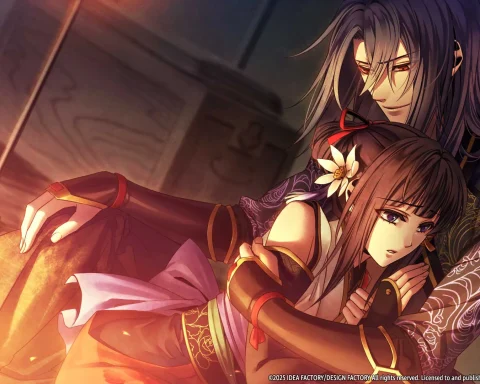I loved the original Coffee Talk. It was warm, despite being set in one of the more rainy places in North America. The characters felt real (mostly), the atmosphere was chill, and the music perfectly complimented the entire experience. So I was of two minds when Coffee Talk Episode 2: Hibiscus & Butterfly was announced. On the one hand, more of one of my favourite games was a good thing. On the other, what if the experience couldn’t be recreated? That second thought actually gave me anxiety.
Related reading: My review of the original Coffee Talk.
It’s 2023 in an alternate, fantastical version of Seattle. Humans live side by side with mythical creatures such as orcs, vampires, and werewolves. Coffee Talk is a small café that opens overnight, where a small but steady stream of customers stop by for a coffee and a chat. In a world that increasingly relies on technology to connect, it’s like a breath of fresh air. (The irony of me saying this about a video game is not lost on me.) There are multiple storylines going on at a time; most characters have their own, though some are shared experiences. And this time around, there’s a mystery! The air is being let out of car tires parked in a specific area… I won’t spoil it but the reason goes far past childish vandalism.
Coffee Talk is, at heart, a visual novel. There’s a lot of pressing one button to circulate through conversational text (though there is an auto button if you don’t feel like it, which I used off and on). There are no choices, no branching narrative, just a straightforward story with straightforward gameplay. The only place it veers from traditional visual novel is with the drink mechanic. Customers will request drinks, whether vague or specific, and then you make them by putting items in one of three slots. The first slot is occupied by things like coffee, tea, and chocolate. The second and third are for things like milk, honey, and ginger. Actually, milk falls into both categories, now that I think about it. When you build a drink, a little screen shows its various characteristics like sweetness and coolness.
As huge chunks of the world are connected through smartphone, it makes sense that there is a smartphone in Coffee Talk. There’s no actual phoning involved, though; just a few apps. The most useful are social media and a drink tracker. Tomochill fills in some gaps in the stories that are told in the café, while also letting you in on what people are doing in the outside world. The brew tracker is most helpful for me, as I’m super forgetful. Every time you make a new drink (that’s included in the game, anyway), it adds the drink’s name, ingredients, and description to a list. There are different tabs for different bases.
The characters are the heart of the game. They show true emotion toward (relatively) common experiences. We see them through life’s highs and lows; for example, Lua is getting married (yay!) but Silver is finding it hard to connect romantically with anyone (boo). With Lua’s wedding planning, we actually see both sides as her fiancé Baileys is another regular. Basically, we see small slices of their lives through conversations with the barista (the player) and the other customers. They all have different coffee preferences, and they will make you feel bad if you don’t make their order correctly. Like, my heart sinks and I feel so guilty for messing up. But there are no permanent repercussions other than maybe not unlocking their entire social media profiles.
My favourite characters are Silver and Amanda, because they show such intelligence while being generally ignorant of the human experience. Both are part of a hive-mind alien species, sent to Earth for research. Silver’s story actually began in the first game, when he was dressed as an astronaut and named Neil. He’s since decided to stay in Seattle, and has given himself a human appearance that he feels suits him (and some of the traits are based on café regulars, which is clever). Amanda is still part of the hive-mind. Despite their different places in life, they both struggle to understand humans. Regardless, Amanda seems more astute and emotionally intelligent than actual humans. It’s fascinating to watch them both interact and grow.
Coffee Talk’s visuals and music are a perfect match. The pixel art is remarkably detailed, and shows the rainy weather off really well using lighting effects. I love the subtleties to the animation, like when a character slightly smirks or how the end of a cigarette burns. During super intense moments, the screen spits to zoom in on characters’ faces and reactions, showcasing how important and emotionally charged those moments are. The music is chill, and feels like you’re in an independently-owned coffee shop. The sound effects are sparse but helpful, and generally include things like thunder (it helps with the atmosphere!) and drink machine sounds. The controller vibration is effective for things like thunder and vibrating phones. It’s too bad there’s no option to turn it off, though. The single visual thing that bothered me is something I mentioned in the game’s preview: every time I press a button on the controller, the cursor reappears at the centre of the screen. It’s a small thing that it’s easy to overlook, but that doesn’t mean it’s not a bit distracting.
All my fears around whether or not Coffee Talk Episode 2: Hibiscus & Butterfly were completely unfounded. The game is warm, grounded in realism despite its fantasy world, with an amazing soundtrack and great drinks to learn about. It is a great compliment to a chilly, rainy day. The characters all have unique personalities so they sometimes clash, but they always figure it out in the end. It’s a wonderful, feel-good visual novel; I can honestly say I hope there is more to come. I’m sure there are more stories to tell. I’m 100 per cent sure the game did its original creator, who has since passed on, proud.
